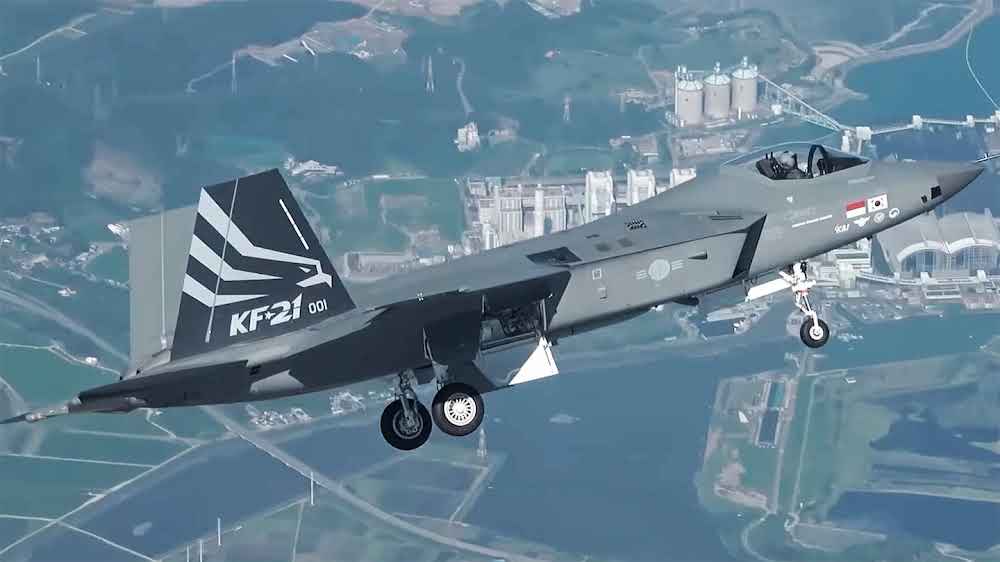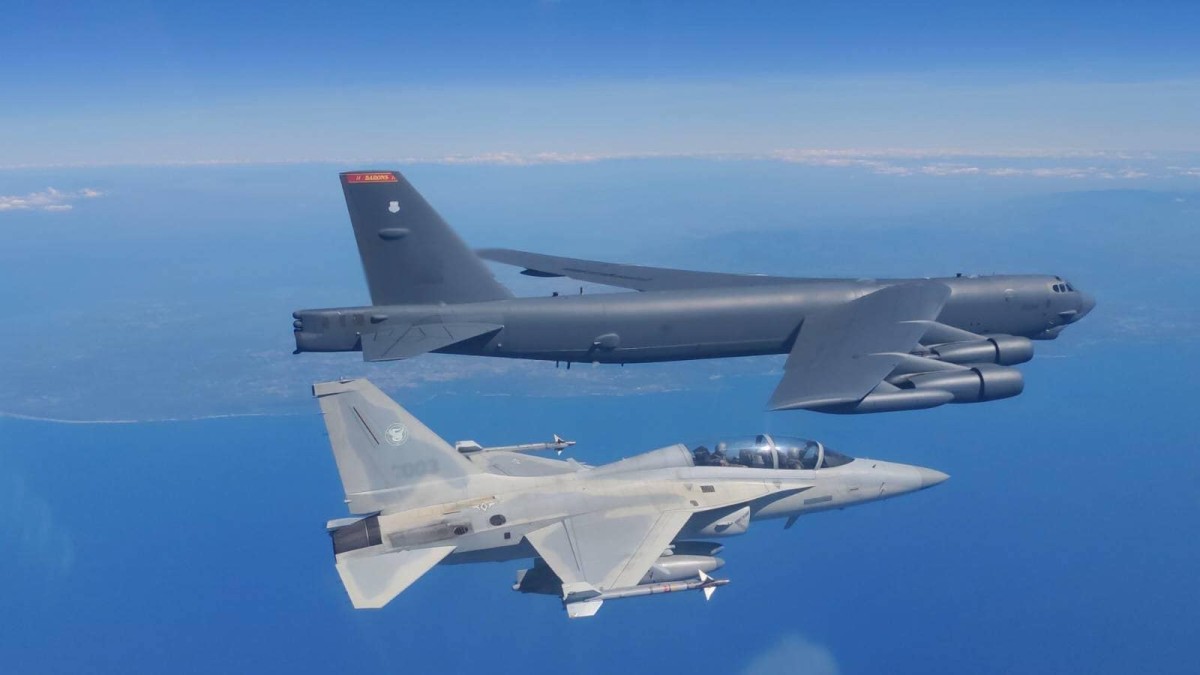South Korea’s next-generation KF-21 Boramae aircraft could now be developed in three different variants. As per reports, the KF-21 Boramae (Hawk), the Republic of Korea Air Force’s (ROKAF) next-generation fighter jet, is being developed into three unique types: the KF-21EA, EX, and SA.
The KF-21, an advanced supersonic fighter, is slated to replace the South Korean Air Force’s aging F-4 and F-5 jet fleet. The three versions are being developed to bolster South Korea’s air power and open export opportunities for the Boramae in the international arms market.
Of these, the KF-21EA will reportedly be based on the two-seat KF-21B. The variant will include a dedicated Electronic Warfare Officer (EWO) stationed in the heavily modified rear cockpit.
This Boramae variant will have three Electronic Attack (EA) and two Electronic Intelligence (ESM) devices to allow the aircraft to carry out its electronic warfare role.
The KF-21EA is being designed to protect allied aircraft during missions by employing its jamming technology to interfere with hostile ground-based air defense systems, much like the US Navy’s EA-18G Growler. It will be equipped with AARGM-ER anti-radiation missiles to carry out the SEAD (suppression of enemy air defenses) mission.
In contrast, the KF-21EX variant is being developed with capabilities that would allow the Boramae to come to par with the fifth-generation fighter jets. To achieve this, the aircraft will feature an internal weapons bay (IBW). Given that weaponry will be carried internally (like with the F-22 and F-35), an IWB would reduce the aircraft’s radar signature and allow the KF-21 to achieve genuine fifth-generation stealth capabilities.
According to reports, the IWB of the Boramae would be used to store either eight smaller air-to-ground munitions or four long-range Meteor air-to-air missiles.
This is in accordance with previous reports by the EurAsian Times that stated that in the fifth-generation or 4.5++ generation race, South Korea appears to be joining the elite group of nations—the US, Russia, and China—with a fifth-generation warplane.
However, the previous report noted that the KF-21 did not feature an internal weapons bay, which makes it much less stealthy than the F-35 Lightning II. With new details emerging, that is beginning to change, and it appears that South Korea means business with Boramae.

Additionally, external Target Acquisition Equipment (EOTS) will also be changed to a built-in type to further enhance stealth performance, and other active electronic injection radar (AESA) and self-defense electronic warfare equipment (EW Suite) are also expected to be improved.
The KF-21EX would likely play a critical role in developing the Next Air Combat System (NACS), a future network that uses satellite data linkages and unmanned aerial vehicles.
The third variant of the KF-21 codenamed the KF-21SA, would be specially designed to meet the demands of export clients. The KF-21SA would enable the customization of armaments and internal equipment to match specific country requirements while maintaining the basic specs that closely resemble the ROKAF model.
For instance, negotiations with prospective buyers such as Indonesia are still in progress. However, final configurations for export models have not yet been decided.
That said, developing a special export variant of the jet aligns with South Korea’s newly acquired reputation as an Asian defense manufacturing giant. The country has already received orders for its FA-50 light attack aircraft and is placing big hopes in the next-generation aircraft to debut in the heavy, multi-role fighter jet market.

However, the variants have been chalked out only as a concept, and there is a long way to go before their development. A member of the Korea Defense Security Forum named Kim Min-Seok told Bizhankook: “In all three models, basic study on the viability of development has only started. After obtaining the comprehensive design and development cost, it takes almost ten years to proceed with the major development.”
KF-21 Boramae Is Progressing
The Boramae fighter jet is slated to become the “backbone” of the South Korean Air Force. It is anticipated to be crucial in developing the nation’s three-axis defensive system, a tactic designed to counter possible North Korean threats.
The Boramae initiative, which has been developing since 2015, took off in 2020 when prototype assembly started.
The government tasked Korea Aerospace Industries (KAI) with producing the jet, and technological support was sought from American firm Lockheed Martin, building upon their prior collaboration on the FA-50 light attack aircraft.
It took off for the first time in July of 2022. The six prototypes have since undergone extensive testing by the DAPA, which includes a variety of performance assessments. Supersonic flight testing was conducted for the first time by KF-21 Boramae in January 2023.
Testing (including flight, ground, and other assessments) is scheduled to last until 2028 when Air Force squadrons begin deploying the first group of KF-21s for air-to-air missions. With ongoing testing and development efforts, the Boramae is poised to emerge as a powerful asset for the South Korean Air Force, reinforcing its ability to respond effectively to modern security threats.
In March this year, South Korea’s defense officials approved a proposal to commence the production of 20 KF-21 Boramae fighter jets this year. Korea Aerospace Industries Ltd. was originally supposed to sign a contract with the Defense Acquisition Program Administration (DAPA) in 2024 to build 40 of the cutting-edge fighter’s first batch.
However, the production volume was cut in half to just 20 units in response to the recommendations of a feasibility study that was carried out the previous year.
The study noted the need for more testing, especially concerning the jet’s air-to-air missile and active electronically scanned array radar capabilities. After further testing, the remaining units of the planned 40 aircraft will be contracted the following year.
Looking ahead, South Korea aims to expand its KF-21 fleet further, aiming to operate 120 units total by 2032.
- Contact the author at sakshi.tiwari9555 (at) gmail.com
- Follow EurAsian Times on Google News




